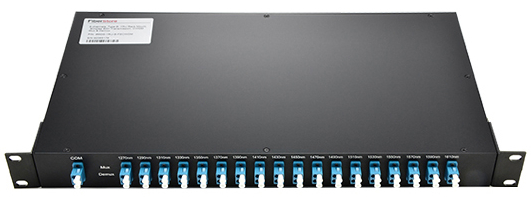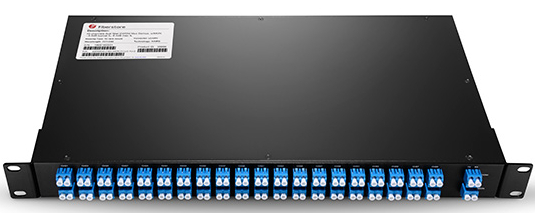CWDM (coarse wavelength division multiplexing) comes from the WDM system. It is designed to increase the capacity of a fiber optic network without adding additional fiber. The wavelengths of CWDM channels are spaced 20 nm apart which allows the use of low-cost, uncooled lasers. The wavelengths usually range from 1270 nm to 1610 nm.
Today, CWDM Mux/Demux (multiplexer/demultiplexer) module is an important device to increase the current fiber cable capacity by transmitting multiple wavelengths with up to 18 signal channels over a single fiber. When using a CWDM multiplexer at the beginning of the network, accordingly a CWDM demultiplexer should be used at the opposite end to separate the wavelengths and direct them into the correct receivers. This greatly reduces the number of fiber cables and other data links.
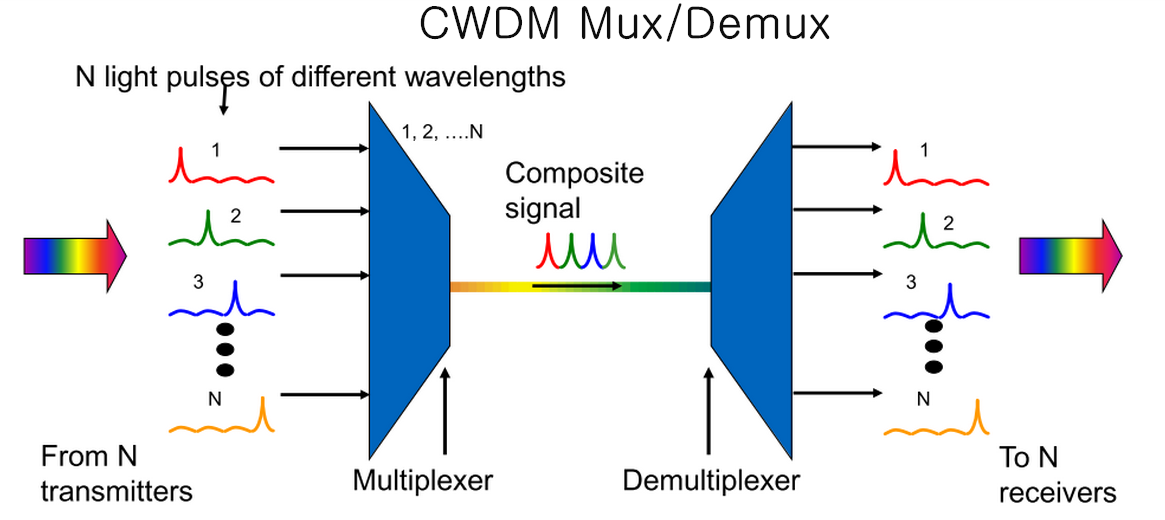
Several basic components constitute a CWDM Mux/Demux system. They are a local unit, a remote unit, a rack-mount chassis, CWDM Mux/Demux modules, CWDM SFP transceivers and single-mode patch cables. The local unit and remote unit are two different switches. The rack-mount chassis is needed to be installed for holding the CWDM Mux/Demux module. As for the connections, CWDM SFP transceivers are usually used between a CWDM Mux/Demux module and a switch, and single-mode patch cables are used to connect transceivers to the module.
Multiple single-mode patch cables are needed for CWDM Mux/Demux system connection. And the transceivers used in the system must support the wavelengths from 1270 nm to 1610 nm. Make sure the installation environment is in a dry and interior space. The module should have enough room to create airflow for easier heat distribution. Any inappropriate arrangement that obstructs the ventilation holes should also be avoided.
Step one, mount the system chassis on the rack. The CWDM rack-mount chassis can be mounted in a standard 19-inch cabinet or rack. Make sure that you install the rack-mount chassis in the same rack or an adjacent rack to your system so that you can connect all the cables between your CWDM Mux/Demux modules and the CWDM SFP transceivers.
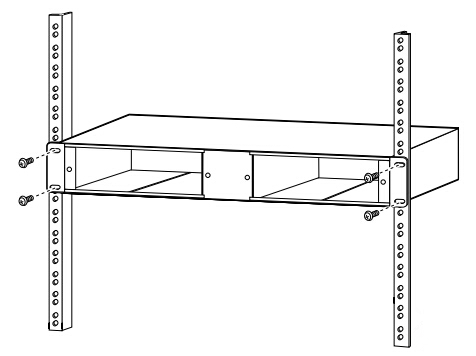
Step two, install the CWDM Mux/Demux modules. You should first loose the captive screws on the blank module panel and remove the panel. Then align the module with the slot of the chassis shelf and gently push the module into the slot. Finally, ensure that you line up the captive screws on the module with the screw holes on the shelf and tighten them up.

Step three, install CWDM SFP transceivers. Since each channel has a specific wavelength, transceivers must comply with the right wavelengths. Each wavelength must not appear more than once in the system. Device pairs must carry transceivers with the same wavelength.
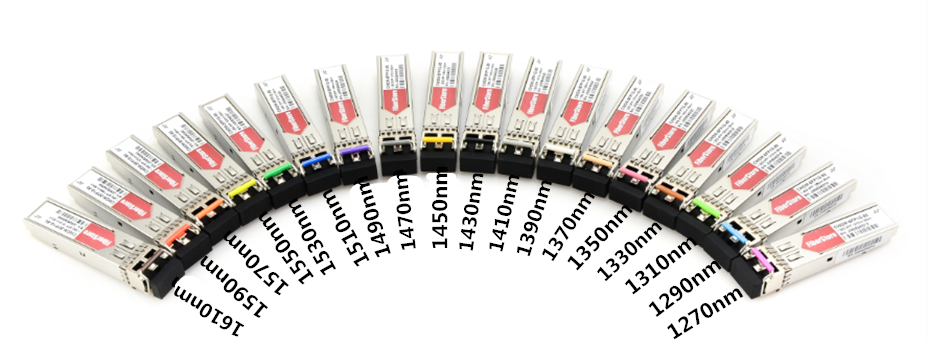
Step four, install the CWDM Mux/Demux to the switch. After inserting the CWDM SFP transceiver into the switch, single-mode patch cables are used to connect the transceiver to the CWDM Mux/Demux module.
Step five, connect the CWDM MUX/DEMUX pairs. In a CWDM MUX/DEMUX system, multiplexer and demultiplexer must be installed in pairs. Two strands of single-mode patch cables are needed in the duplex Mux/Demux module, and one strand of single-mode patch cable is enough for the simplex Mux/Demux module.
When you finish all these steps, the installation of CWDM Mux/Demux system is successfully completed.
CWDM Mux/Demux system is definitely a good solution to high capacity data transmission. It is efficient for power, space, and cost-saving. And the installation procedure is easy to follow. All the components above are available in FS.COM. If you are interested, please come and visit our website for more information.

